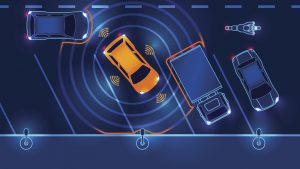 Much was written when Teslas under a new “Smart Summon” feature started crashing in parking lots–which was exactly where the feature was designed to work. This week, Wired took a shot at breaking down what that means for autonomous vehicles (AVs) in general, and why parking lots and garages will prove especially tricky for driverless cars. Among their findings:
Much was written when Teslas under a new “Smart Summon” feature started crashing in parking lots–which was exactly where the feature was designed to work. This week, Wired took a shot at breaking down what that means for autonomous vehicles (AVs) in general, and why parking lots and garages will prove especially tricky for driverless cars. Among their findings:
- As designed now, AVs will likely lose their GPS signals in underground garages, leaving them to find their way without a main source of direction. While they can use cameras to navigate, experts fear tight spaces like garages might leave those systems not as helpful as they are on roads.
- Parking lots aren’t like highways, where other cars are all traveling in the same direction and around the same speed. Parking means bikes, people, and all sorts of vehicular movements and maneuvers.
- Parking lots, in particular, are less defined than roads–Teslas seem to be having a hard time figuring out what’s pavement and what’s grass, for example.
- Finally, parking lots are a uniquely human experience, with lots of nuance and rule-bending.
“In fact, parking lots are one of the most human places you could put a car that doesn’t need a human to drive,” the article says. “Their rules are not always consistent, and drivers, moreover, don’t always follow them. They’re full of little people-to-people interactions: a wave to let the dad behind the stroller know that that you’re going to stop and let him cross; a nod to tell the other driver to inform him that you’re waiting for this woman fiddling with her keys to finally pull out of her spot.”
